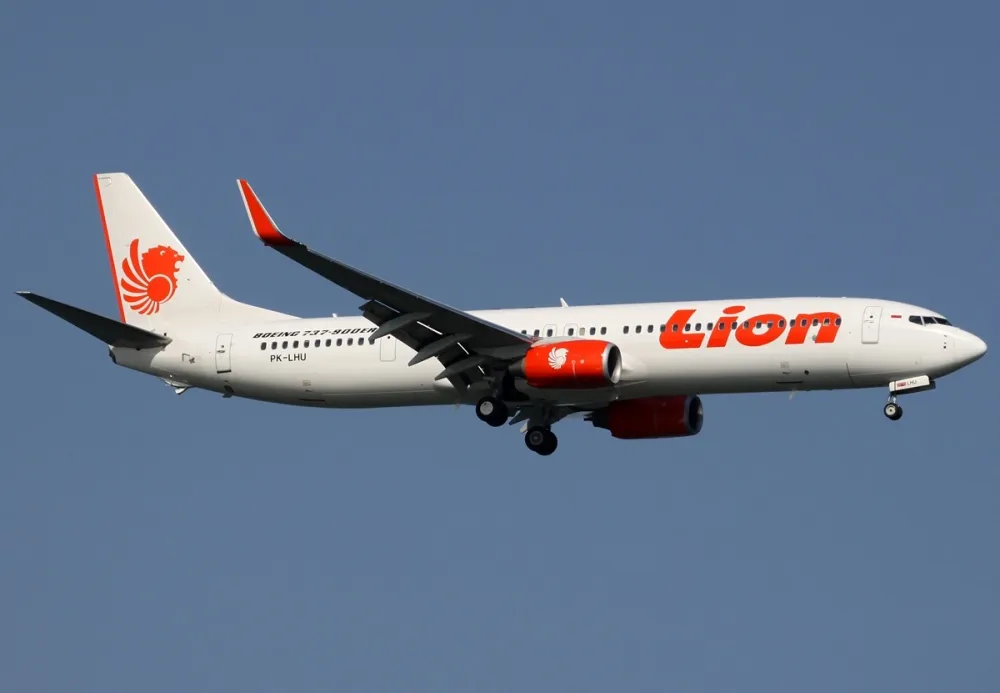
Lion Air's safety record a mixed bag
Oct 30, 2018

Lion Air has a safety record that reflects a mix of achievements and concerns. Established in 1999, the airline rapidly expanded its operations across Indonesia and beyond. While it has successfully transported millions of passengers, its history includes several high-profile incidents, most notably the tragic crash of Flight JT610 in 2018, which raised significant questions about its safety protocols and aircraft maintenance practices. Despite these challenges, Lion Air has made efforts to enhance safety measures and comply with international standards. However, the airline's reputation remains a topic of scrutiny within the aviation industry and among travelers.
Understanding Lion Air's Safety Record
Lion Air, one of Indonesia's largest low-cost carriers, has garnered attention for its mixed safety record. While the airline has made significant strides in improving its operational standards, its history still raises concerns among travelers and aviation experts alike. In this article, we will explore various aspects of Lion Air's safety record, highlighting key data and incidents that have shaped its reputation.
Historical Overview of Lion Air's Safety Incidents
Since its inception in 1999, Lion Air has experienced a series of incidents that have affected its safety reputation. Below is a table summarizing some significant incidents over the years:
| Year | Incident | Casualties |
|---|---|---|
| 2002 | Flight 538 crashed during landing | 27 fatalities |
| 2004 | Flight 897 overran the runway | No fatalities |
| 2013 | Flight 904 skidded off the runway | No fatalities |
| 2018 | Flight 610 crashed into the Java Sea | 189 fatalities |
As the table illustrates, Lion Air's safety record includes both fatal and non-fatal incidents, underscoring the airline's mixed history in aviation safety. The tragic crash of Flight 610 in 2018, which resulted in 189 fatalities, was a pivotal moment for the airline, prompting increased scrutiny from aviation regulatory bodies.
Regulatory Oversight and Improvements
In response to its safety record, Lion Air has made efforts to enhance its operational protocols. The Indonesian government, along with the Directorate General of Civil Aviation (DGCA), has implemented stricter regulations and oversight to improve safety standards within the airline. These measures include:
- Regular safety audits
- Enhanced pilot training programs
- Upgraded maintenance procedures
Additionally, Lion Air has invested in modernizing its fleet, with a significant number of Boeing 737 MAX aircraft added in recent years. This modernization is aimed at improving safety and efficiency, aligning with international aviation standards.
Public Perception and Consumer Confidence
The mixed safety record of Lion Air has led to varied public perceptions. While many travelers opt for the airline due to its affordable fares and extensive network, others express hesitance rooted in safety concerns. Consumer confidence is critical in the airline industry, and Lion Air must work diligently to rebuild trust among passengers.
According to a recent survey, a significant percentage of travelers prioritize safety over cost when selecting an airline. This highlights the importance of Lion Air addressing its safety reputation effectively:
| Factor | Importance (%) |
|---|---|
| Safety Record | 75% |
| Cost | 50% |
| Flight Frequency | 30% |
As indicated in the table, safety remains a top priority for travelers, suggesting that Lion Air needs to adopt strategies that prioritize passenger safety to enhance its market position.
Recent Developments and Future Outlook
In recent years, Lion Air has focused on improving its image through increased transparency and communication with the public. The airline has established a safety management system and is committed to adhering to international safety standards. This includes regular training for pilots and crew and a commitment to maintaining aircraft in optimal condition.
Moreover, Lion Air has also engaged in partnerships with international aviation bodies to gain insights into best practices and safety protocols. These collaborations are vital for the airline to align with global safety standards and to reassure passengers about their commitment to safety.
Conclusion
Lion Air's safety record remains a mixed bag, characterized by both significant improvements and historical challenges. As the airline continues to modernize its fleet and enhance its safety protocols, it is essential for Lion Air to maintain transparency and actively address public concerns about safety. The journey toward rebuilding consumer confidence will require sustained effort and dedication to safety excellence.
Ultimately, Lion Air's future in the competitive aviation market will depend on its ability to prioritize passenger safety while providing affordable travel options. By continuing to focus on safety and investing in improvements, Lion Air can hope to overcome its past and establish a more positive reputation in the airline industry.
Related Articles

Explore Thailand: The Best Islands to Visit for Paradise, Adventure, and Relaxation

The Ultimate Guide to the Best Islands in Thailand for Your Next Getaway

Do babies need passports? How to get a passport for a newborn

How to get a U.S. passport fast: here’s how to expedite the process

What is Mobile Passport Control: 5 reasons why you should use it

SENTRI vs. Global Entry: A detailed guide

Do you need a passport to go to the Bahamas? Let’s find out

Do you need a passport to go to Mexico? A detailed guide

Do you need a passport to go to Canada? We got the answer

Do You Need a Passport for a Cruise: An Essential Travel Guide

Booster Seat Requirements: All the Rules to Follow in Your Rental Car

What Are the World’s Most Powerful Passports, and How Does Yours Rank?

How to Take a Passport Photo at Home: A Helpful Guide

You've got to have heart! Southwest's new livery

Your opinion: Should water be free on low cost carriers?

Young women bolder than guys as solo travellers
